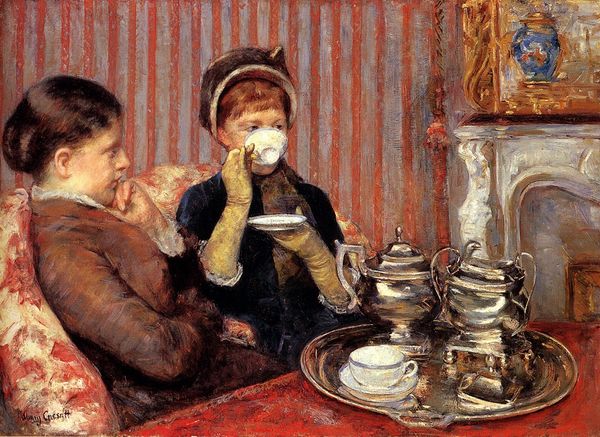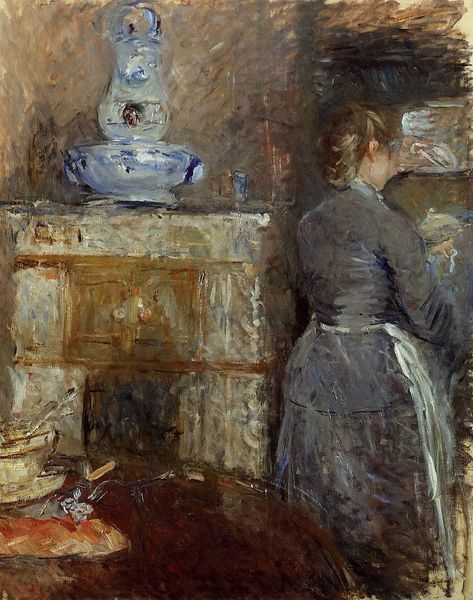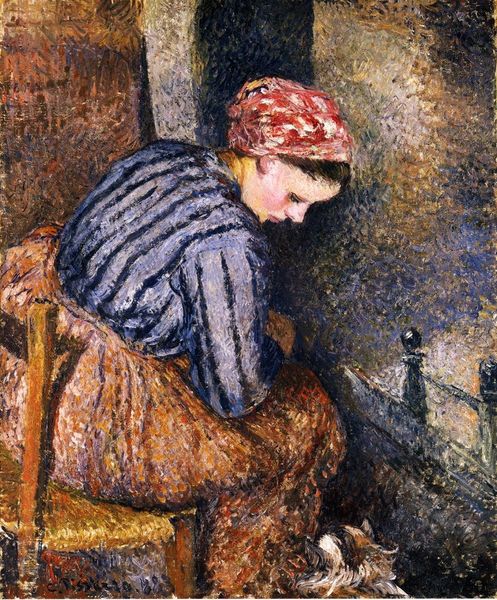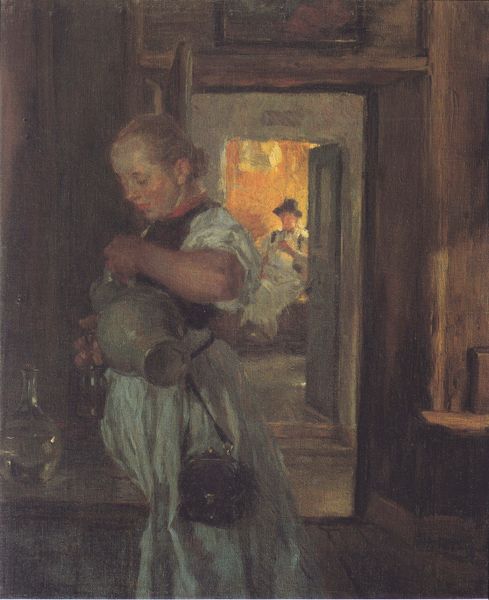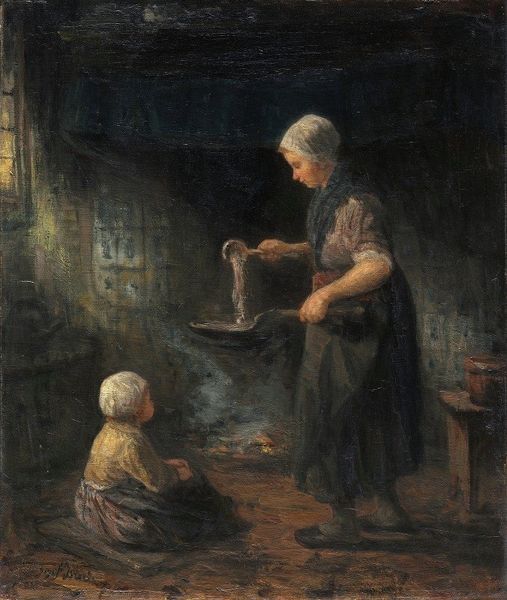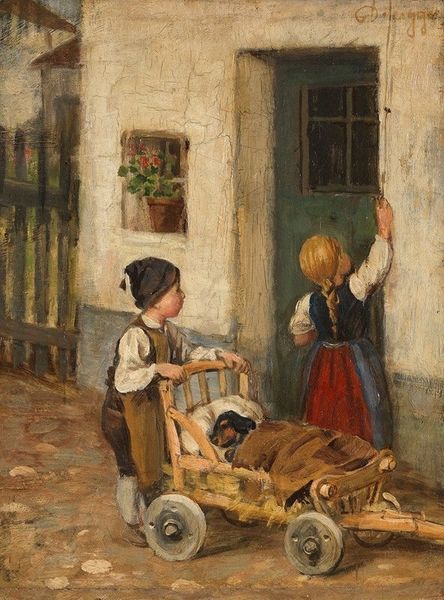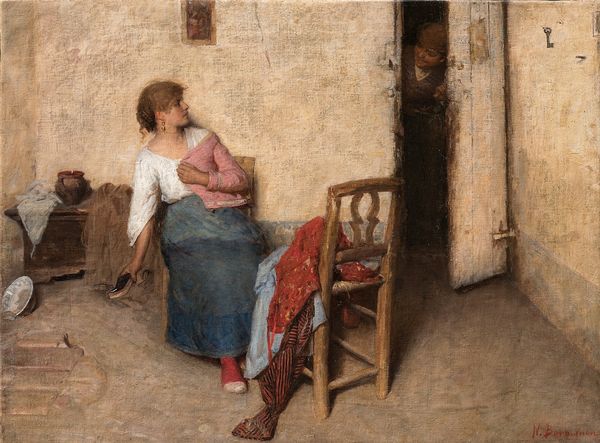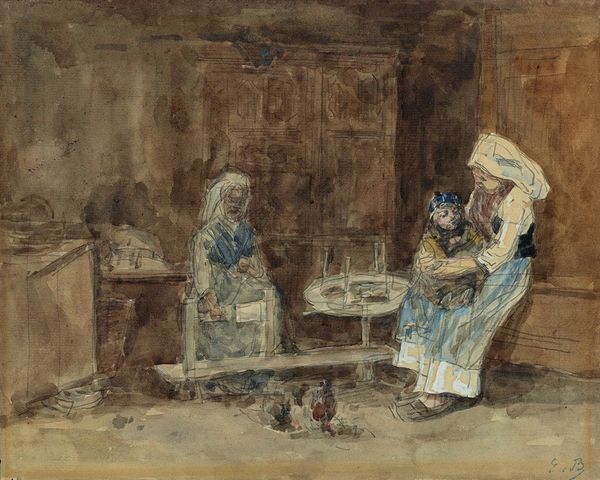
painting, oil-paint
#
portrait
#
gouache
#
painting
#
impressionism
#
oil-paint
#
oil painting
#
genre-painting
#
mixed media
Dimensions: 62.5 x 53 cm
Copyright: Public domain
Curator: Pissarro’s “The Little Country Maid,” painted in 1882 and rendered in oil paint, strikes me initially as a work preoccupied with domesticity, painted with a limited, almost drab, palette. Editor: Yes, drab in the sense of lived experience. Look at the layers of brushstrokes, thick and visible, creating texture not just in the representation of objects, but also implying the physical labor, the repetitiveness, the sheer *making* of this ordinary interior. We see labor embodied. Curator: Agreed, there’s definitely a textural density that disrupts any easy reading. The visible brushstrokes, what would you say, contribute to its compositional… lack of clarity? It feels very intimate, yet somewhat closed-off. The way Pissarro handles light and shadow is less about revealing and more about creating mood. Editor: I am intrigued by the positioning of the figures in relation to the available resources – observe the child in the corner of the room with a face and an arm visible, and compare it to the country maid which has more tools like a sweeping broom. Are both participating in the work effort of their domestic lives? The social hierarchies, so entrenched and, so normal, are brought to the front and reflected via this representation of figures performing common domestic tasks. Curator: Pissarro challenges, or rather, broadens the traditional boundaries of "high art". We’re used to portraits that flatter and mythologize. "The Little Country Maid" gives us an unvarnished glimpse into the lives of those engaged in very essential yet rarely celebrated work. Editor: The beauty, or perhaps better the honesty, of Pissarro's Impressionism is in capturing that mundane, in-between space, challenging what constitutes worthy subject matter. It shows us the constant creation, but also consumption involved in creating this picture. It pushes against this mythologization. Curator: I’m seeing that now more clearly. Pissarro elevates an everyday scene into something worthy of our attention – almost in the spirit of democratizing subject matter for painting. The painting provides an authentic and moving glimpse into a sector of French life and economy often excluded in the high-art realm. Editor: Indeed, and through understanding production, and how images reflect consumption we become aware of our active roles within larger networks that reinforce these norms. This way, art offers insights in political ideologies. Curator: A remarkable testament to Pissarro's dedication to capturing the real lives of those who were often unseen. Editor: An engaging demonstration in revealing social ideologies encoded via something like medium and aesthetic taste.
Comments
No comments
Be the first to comment and join the conversation on the ultimate creative platform.
